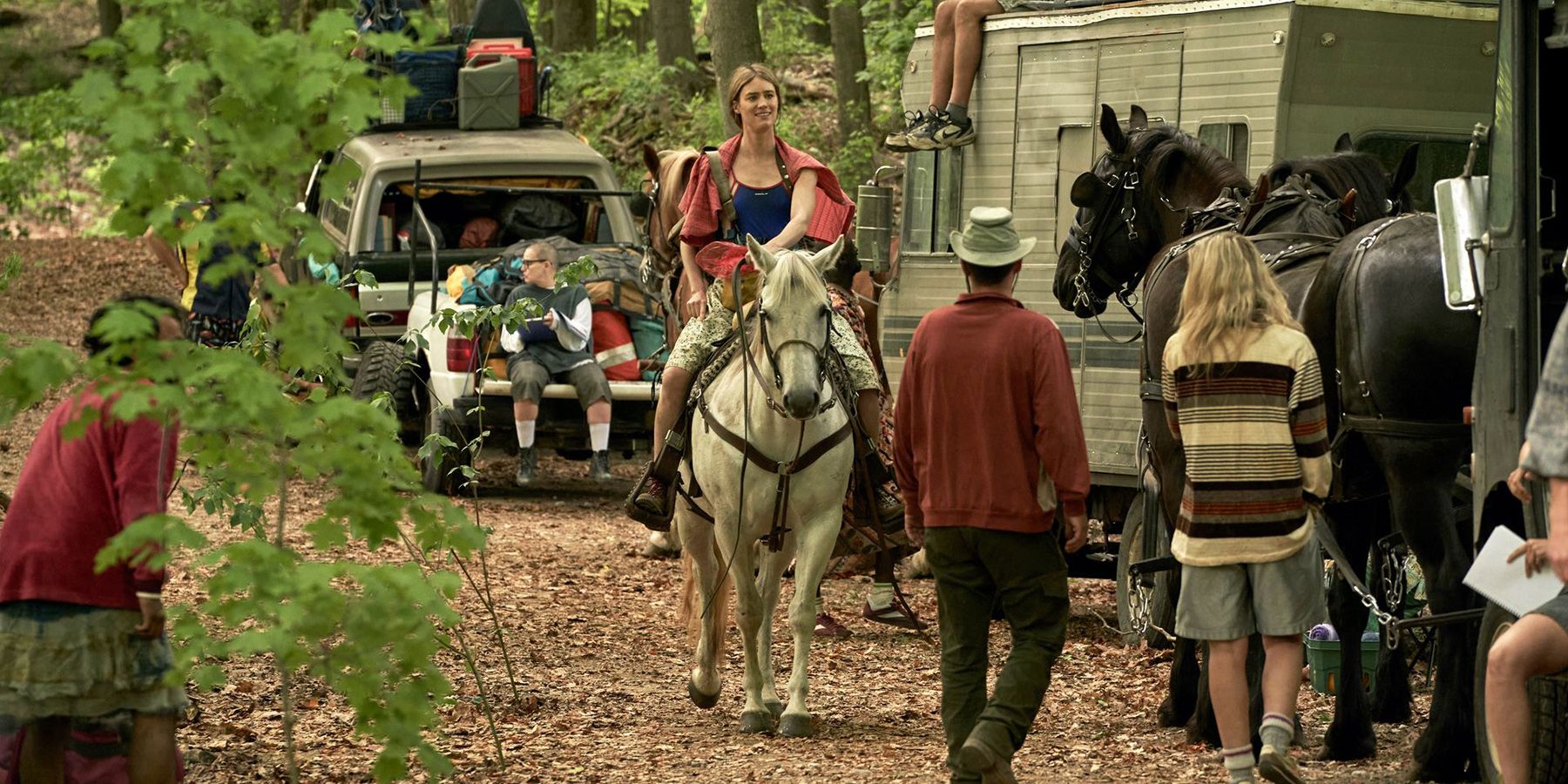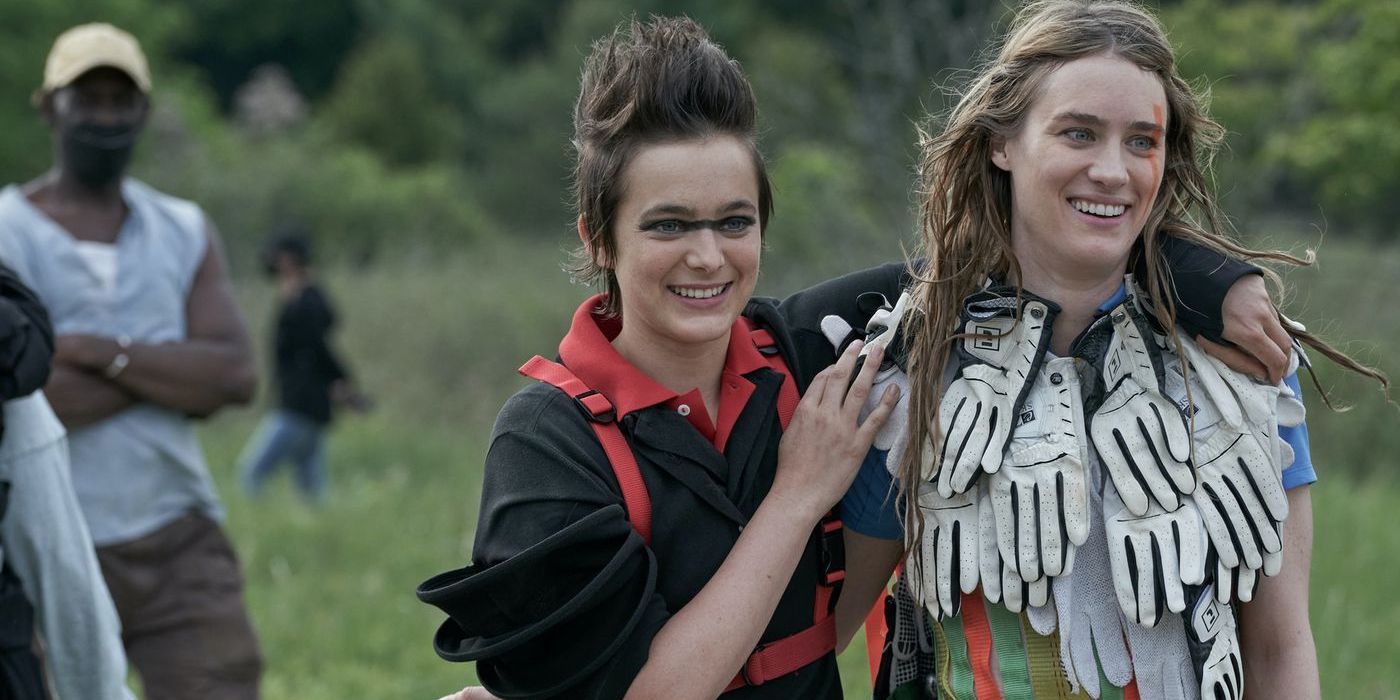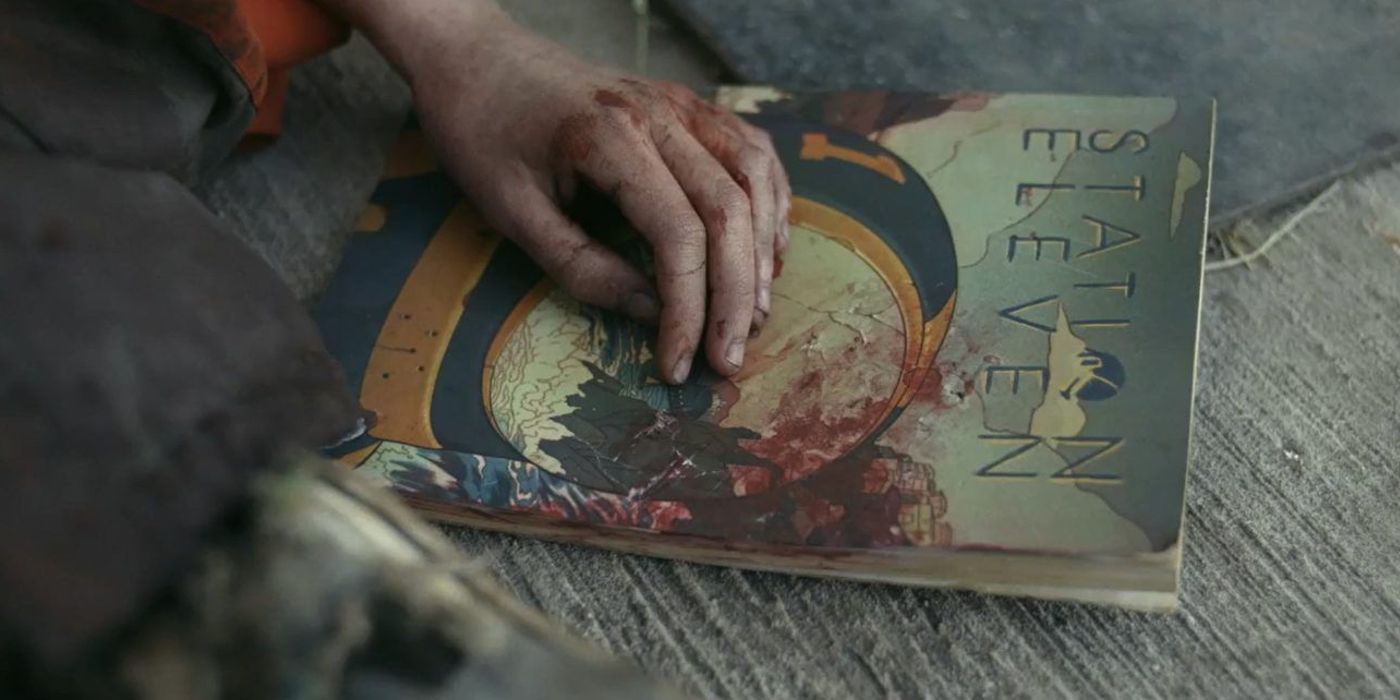Anyone who has spent any amount of time watching TV in the past decade has had their pick of post-apocalyptic stories to choose from. Whether it centers around viruses, natural disasters, zombies, or war, there seems to be a consensus that the world will end, and that stories about that ending are ideal vehicles to explore the essence of human nature. HBO’s Station Eleven stands apart, however, as a wholly new story, eschewing grit and gore in favor of wonder and hope. Station Eleven is about living, rather than just surviving — as a matter of fact, “Survival Is Insufficient,” a quote from the graphic novel at the center of the story, is the title of Episode 6. Whereas other post-apocalyptic stories will sometimes consider the power of art to alleviate the suffering of survivors, Station Eleven assumes that art is essential to the lives of its characters, by building art into the very premise of its tale.
Station Eleven begins with a play. Jeevan Chaudhary (Himesh Patel) is watching a performance of King Lear when he realizes that the actor playing Lear, Arthur Leander (Gael García Bernal), is having a heart attack. Jeevan rushes onstage, but he is unable to do anything to save Arthur — which is unsurprising, as Jeevan is not a doctor. After the disrupted performance, Jeevan offers to help a little girl from the play get home; he is with her on the train when he gets a phone call from his sister, a nurse, who informs him that a highly contagious virus is about to wipe out humanity. Jeevan takes the little girl, Kirsten Raymonde (Matilda Lawler), to his brother’s apartment, and the three of them wait out the ensuing pandemic together.
The rest of the story is told in two timelines. The main timeline takes place twenty years later and features an older Kirsten (Mackenzie Davis) and her companions in the Traveling Symphony, a repertory theater troupe under the auspices of composer Sarah (Lori Petty), which journeys from community to community, performing Shakespeare’s plays. The second timeline flashes back to the onset of the pandemic, as experienced by the mysteriously-interconnected characters who are briefly introduced in the first episode. At the core of both of these narratives is a story-within-a-story, the graphic novel Station Eleven, which young Kirsten has in her backpack the night she meets Jeevan. It serves as more than a touchstone, its words more than a refrain: it is the axle that connects past and present, tying the characters together and propelling them forward on their parallel paths.
Station Eleven begins with a play. In fact, it repeatedly links a major story beat to a dramatic performance that resonates symbolically with the plot. Arthur’s death — and the death of civilization, that same night is paired with the tragedy of King Lear, the story of a man whose foolishness in apportioning love and legacy leave him bereft of both. As Lear, Arthur is a parody of himself, for he has loved two women and lost both, and his screen career has been full of sound and fury (and has signified nothing). In the present, the Traveling Symphony has chosen Hamlet for their play of the season. Like Arthur, Kirsten is cast as a mirror of herself: Hamlet’s struggle against demons, both internal and external, echoes the very real trauma that keeps Kirsten imprisoned in fear, even as the threats around her are few.
Yet these performances of Shakespeare, while significant, are not the defining plays of the miniseries. Station Eleven is about a graphic novel, and the most cathartic moments of the show are reserved for plays staged from the graphic novel itself. The viewer is told early on that Kirsten spent her year of pandemic isolation adapting a scene from her beloved book. They are told that she later performed it, shortly before she left isolation. Episodes are littered with out-of-context lines from the graphic novel, including quotes from that scene, but the viewer is not allowed to see the full scene until Kirsten is ready to confront the events that occurred after her play, overshadowing her tragic performance with real tragedy. This pacing reflects the flashback narrative as a whole: the events of twenty years ago have been given to the viewer in isolated vignettes, but it is not until the end that the series reveals how they all fit together to create the present.
Part of what makes Station Eleven remarkable is the way it actualizes and heals its characters only after the world has ended. Found family is not a new concept on television, but Station Eleven rejects that particular take, offering each character catharsis as an individual. What unravels in the past timeline appears in the present timeline as remnants stitched together. Many similar stories cover the apocalyptic transition, from the time before to the post-apocalyptic present. The characters are never able to shed the mindset of survival, a mindset that the story validates by introducing new threats continually. In Station Eleven, the apocalypse is brief, then gone. There are still threats, but the characters’ main focus is living fully — and the story validates that goal by offering them healing.
The plays within the show are not tangential to that healing; instead, they facilitate the healing. Lest the viewer miss this point, Kirsten herself reiterates it: once she has dealt with her demons and no longer needs to rehearse that process as Hamlet, she urges another to step into the role, to undergo the same catharsis she has experienced. To show that art is powerful, Station Eleven does more than merely incorporate art into its story. Kirsten’s belief in the art is what convinces the viewer that art is necessary.
Indeed, the show is less about the importance of art than it is about pandemic survivors living out that conviction. The result is powerful — Station Eleven is an absolute delight, despite its bleak subject matter. If pandemic-fatigued viewers are reluctant to watch a show that does not, on its face, sound like much of an escape, Station Eleven makes the case for itself: as a work of art, it invites the audience to partake in the same kind of catharsis that its characters experience. It fulfills the very purpose of art, offering beauty and hope, reflecting familiar truths with new insight and elevating the human experience, from surviving to living. Station Eleven emphasizes the importance of art by being the kind of story for which art exists.



